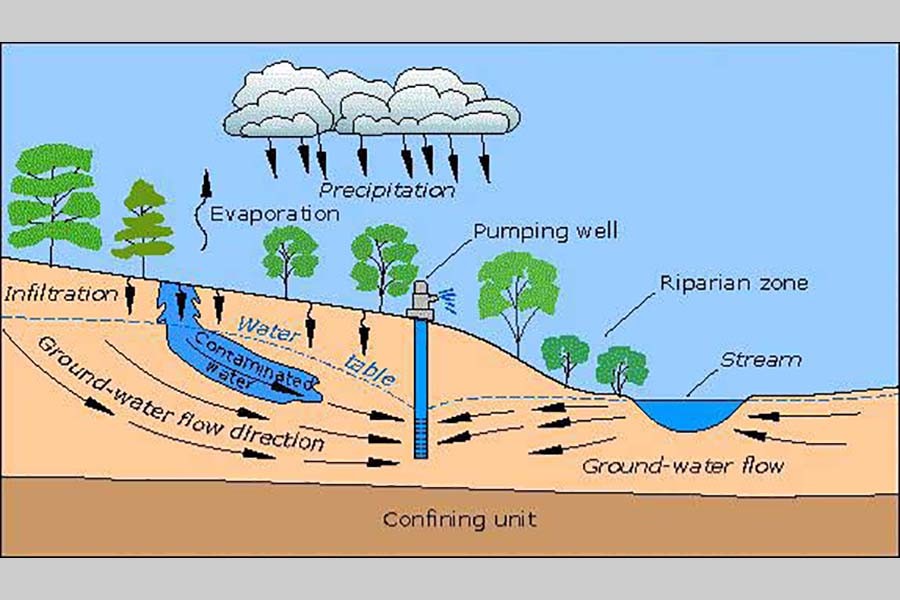Among a number of threats to human survival, the most urgent but least prioritised lies underfoot: groundwater. The World Economic Forum ranks water crisis the world's third greatest risk by impact and extreme weather the top risk by likelihood. Aquifer depletion in agricultural regions could threaten nearly half the world's food sources and deny 1.8 billion people reliable access to water by 2050, according to a 2016 study. As per the study, aquifers in India's Upper Ganges basin may be depleted within 25 years. This alarming vulnerability calls for immediate policy action from the government. It is India, which extracts more groundwater than any other country in the world, accounts for 25 per cent of the world's extracted groundwater, more than the next two countries, China and the United States, combined.
Bangladesh too is subject to rapid groundwater depletion. The overwhelming dependency in Bangladesh on ground water is set to take the country to an ecological disaster, experts have already warned.
A recent survey shows, groundwater is under constant threat from both agricultural and urban uses. Declining rates of natural replenishment are threatening the sustainability of aquifers in the Indo-Gangetic Basin, which constitute one of Asia's most densely populated and agriculturally productive regions.
In the early 1980s, groundwater overtook surface water as the primary source for irrigation. It now serves more than 60 percent of India's net irrigated area compared to 30 percent for surface water. The Indus Basin, which accounts for a significant share of India's population and food production, was declared in a 2015 NASA study to be the second most overstressed aquifer in the world.
In Bangladesh, groundwater level on average drops by more than 5 metres every year as the country relies more and more on the 5 million tube wells as our source for water. Irrigation alone uses up more than 87 per cent of the total extracted water. "Saline water is penetrating further into the mainland of southwestern region to affect the only remaining freshwater pocket of the Tentulia River and the Meghna estuary", said Dr M Eftekharul Alam, an expert.
A recent study of BADC has found that huge saline water is likely to penetrate about 40km inland due to excessive withdrawal of groundwater. Unplanned shrimp cultivation requiring saline waters deteriorated the environment in the region while sea-level rise, being caused by climate change, could intensify salinity problem in the southwestern coastlines.
Salinity intrusion is increasing gradually in the coastal belt due to different human-induced and natural causes, threatening crop production and making far-reaching adverse impacts on ecology. For example, water table in Salikha upazila of Magura had already gone down below the mean sea-level as the upazila is connected with the Bay of Bengal through Jessore, Satkhira, Khulna and Bagerhat.
Water flow in the rivers of the southern region has decreased sharply in the last several years, which contributed to salinity intrusion, said Umme Kulsum Navera, professor, water resources engineering department, Bangladesh University of Engineering and Technology (Buet).
It is now urgent that immediate steps are taken to reduce Bangladesh's reliance on groundwater. A national consensus has to be built to save the sources of water - rivers, canals and wetlands - from pollution and encroachment. Proper and strict enforcement of laws is a must to save rivers and other water bodies.


